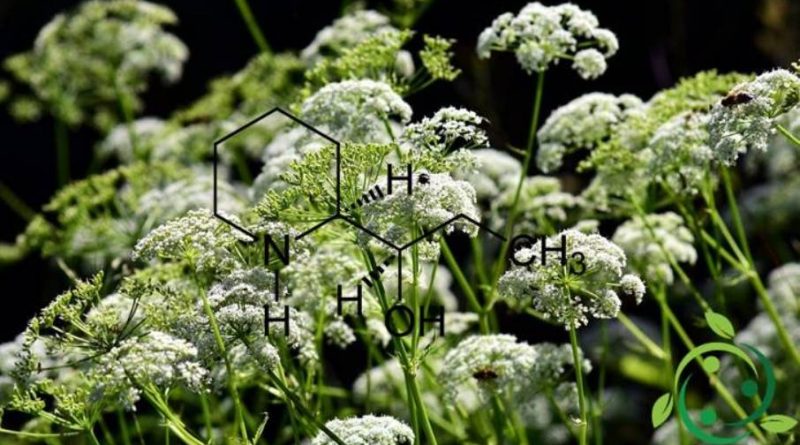The conhydrine
The conhydrine
The conhydrine is a poisonous alkaloid contained in the hemlock (Conium maculatum L.), whose brute chemical formula is: C8H17ON (2-α-hydroxypropyl-piperidine). This oxygenated alkaloid was first isolated from Wertheim from C. maculatum.
The conhydrine, along with other alkaloids is contained in the leaves and fruits of hemlock.
It is a substance in colorless lamellar crystals with pungent odor, endowed with narcotic and antispasmodic action. The term conhydrine comes from the Latin scientific conium and the suffixes -hydro and -ina.
In the case of oxidation with chromic acid, the conhydrine produces L-piperidyl-2-carboxylic acid. It is converted into L-conicin by reduction of the iodo-derivative molecule (iodoconiin), C8H16IN, formed by the hydrodic acid and phosphorus at 180 ° C, or by hydrogenation of the mixture of conicles produced, when it is dehydrated by phosphorus pentoxide in toluene.
The conhydrine is a solid, volatile and oxygenated alkaloid. According to the Dragendorff * it possesses almost the characters of the cone and the conicina.
* Johann Georg Noel Dragendorff (Rostock, 8 August 1836 – 7 April 1898) was a German chemist and pharmacist.
Warning: The information reported is not medical advice and may not be accurate. The contents are for illustrative purposes only and do not replace medical advice.

